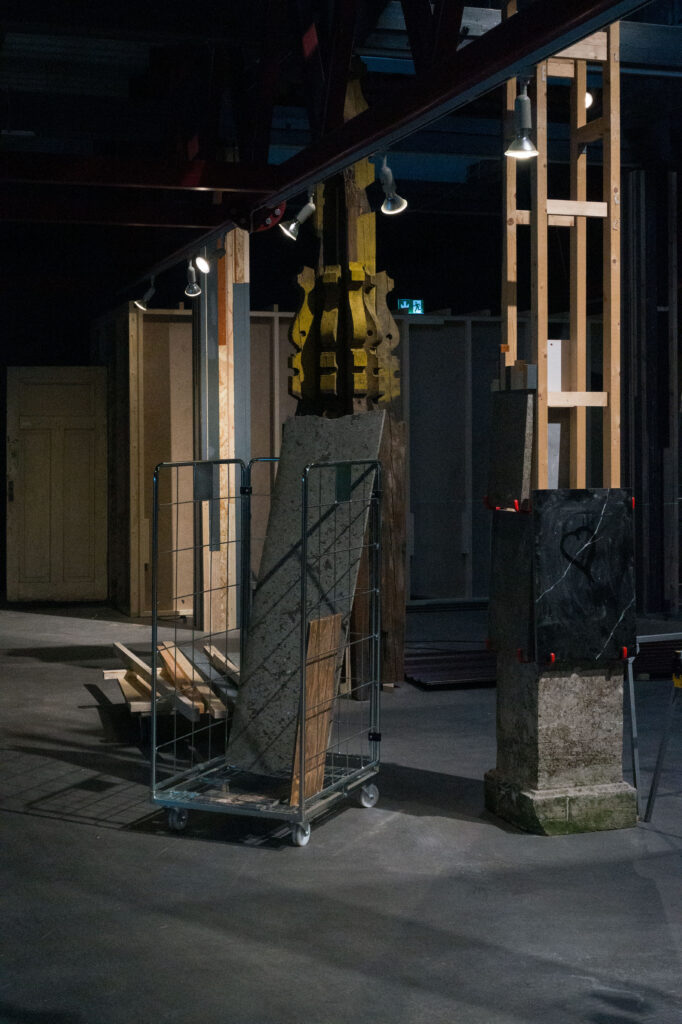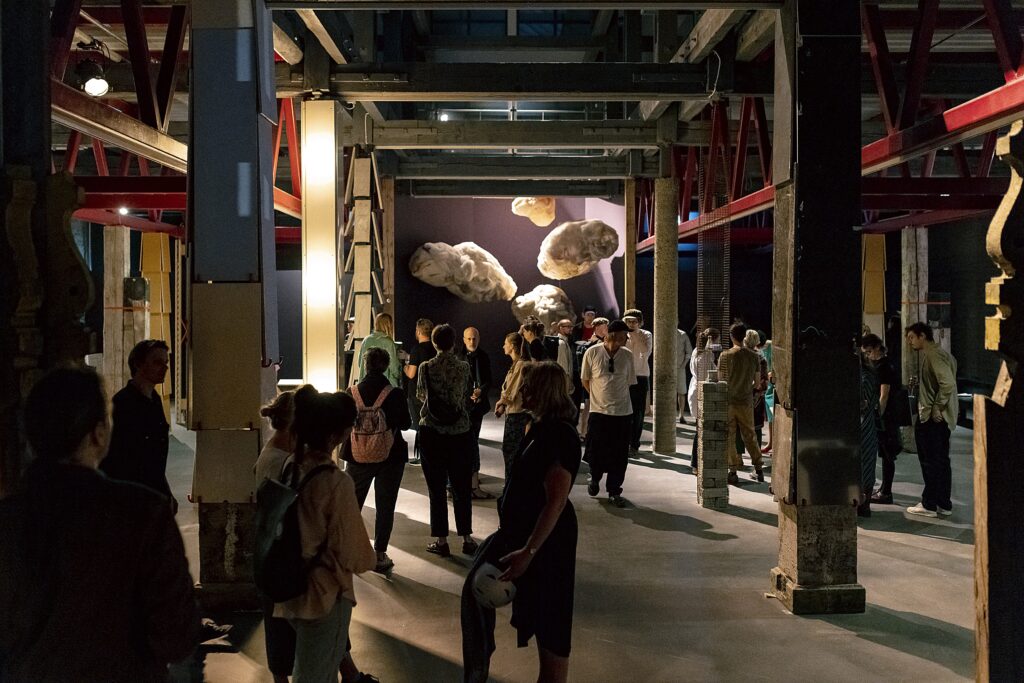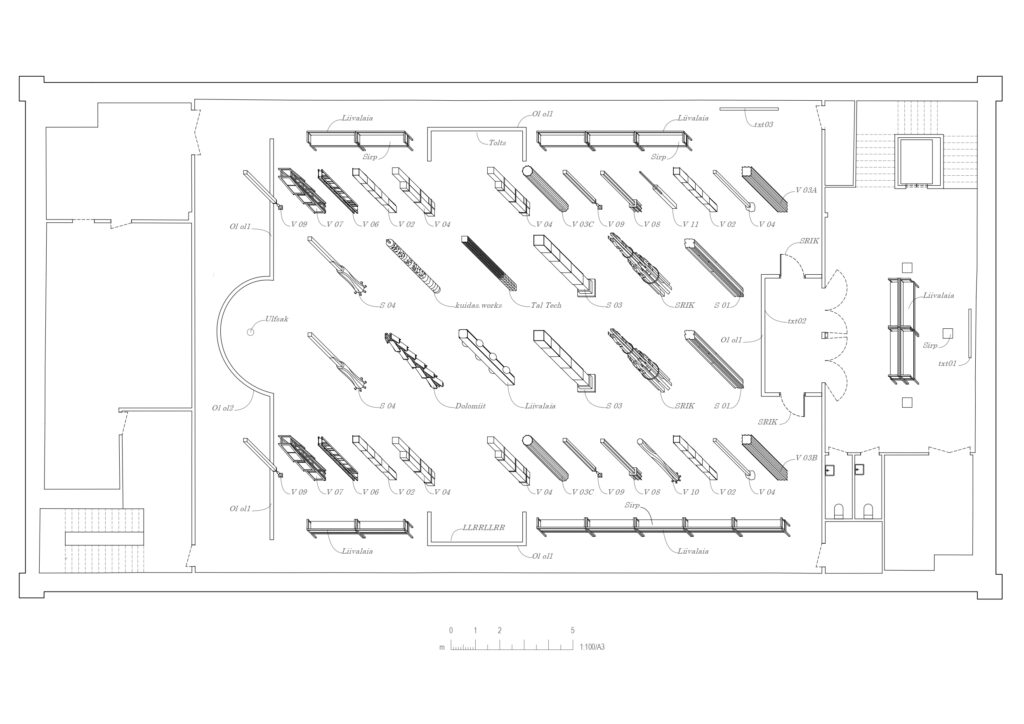Urban Stocks is a spatial installation that took a look at the flows of building materials through landscapes and cities. The title of the exhibition derives from the English term ‘urban mining’, which is a proposed alternative to resource extraction from natural landscapes. The amount of energy used in common practice for the extraction, production, construction, maintenance and demolition of building materials is in need of a critical review. The aim of Urban Stocks is to explore smart ways of sourcing building materials from urban space – from demolition sites, foundation pits, discarded fixings and finishes, scraps from public space maintenance and refurbishment – and using them creatively in architecture.
The keyword for the exhibition is ‘spolia’ – an ancient reuse technique from the Mediterranean cultures, where valuable decorative stones are mixed with utilitarian masonry. In the installation, limestone and sewage pipes, logs and suspended ceiling panels meet in material nodes, which created a kind of interstice in the flow of building materials in Tallinn. 36 columns lined the basilica-like main hall in the former Rotermann Salt Storage building creating a central nave and four aisles. The column – a motif of classical architecture that has shaped the history of architecture both theoretically and practically – is once again the focus of attention.
The exhibition looked at some of the ongoing processes in Estonia related to circular use of construction materials, including pilot projects on material life cycle mapping and smart demolition (e.g. LifeIP BuildEST circular economy working group), sorting and storage of scrap materials (SRIK Scrap Materials), reuse of materials in new buildings (e.g. by KUU and Nikita Atikin architects for Kullo Centre) and application of excavated soil (e.g. use of clay from foundation pits by kuidas.works).

















































































































































































































